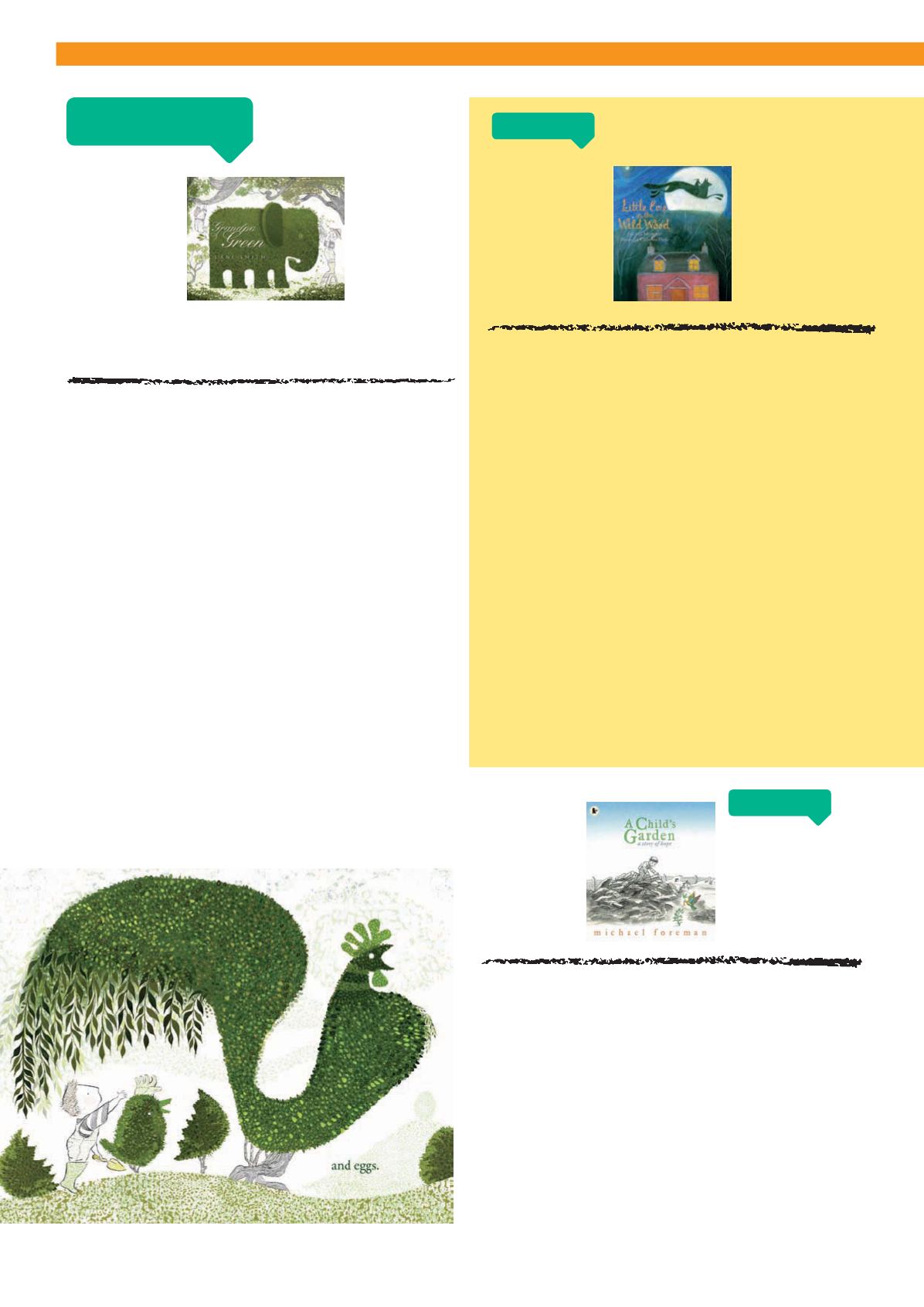
16
TEACH READING & WRITING
5
What’s the story
A child in awar-torn landscape
plants a vine, spreading happiness
across the rubble. Soldiers from
the ‘other side’ destroy it – but its
seeds survive, and soon there are
more vines, with deeper roots and
spreading branches. Conflicts
can be resolved, and caring about
the natural world togethermakes
it possible.
War is a difficult subject to
address at KS1, and books that
do so tend to avoid realism. Not
soMichael Foreman, who
shows us piles of rubble and
soldierswith bullets slung
across their chests. He also
shows us the power of the
natural world, the resilience
of the human spirit – and hope.
Deep thinking
Themes includewar and conflict,
resolution, healing, hope, the
power of the natural world, and
the human spirit.
4 6
What’s the story?
It isn’t difficult to summarise the
plot of this book. Evie goes into a
forest, meets awolf and shares
some tarts. What’s harder is
putting afinger onwhy itmakes
us feel theway it does. Is Evie
meant to be RedRidingHood?
Because she doesn’t seemto
need awoodcutter to rescue her.
Andwhy isn’t she scared?
With itsmysterious and
dreamlike paintings, this is a
book that catches ourmemories,
reminding us of stories half-
forgotten and thingsmisplaced.
Words and pictures combine
to create an atmosphere that
lingers, and there aremany
opportunities for response.
Deep thinking
Themes include the power of the
LittleEvie
in theWild
Wood
BY JACKIEMORRIS
ANDCATHERINEHYDE
(Frances Lincoln)
AChild’s
Garden
BYMICHAEL
FOREMAN
(Walker)
GrandpaGreen
BYLANESMITH (Macmillan)
Key Stage 1
natural world, courage, risk and
safety, fear, independence and
self-reliance, growth, change,
hiddenmeanings and symbols.
Try this...
●
“Little Evie stepped over the
stile and into thewildwood…”
Explorewhat happens to Evie
through drama and discussion.
Be as imaginative as possible,
then pick your favourite ideas
and develop them.
●
Can you think of other stories
featuring forests? Read some
fairy tales (Hansel andGretel,
RedRidingHood) and Into the
Forest byAnthony Browne.
What do these forests represent
(danger, fear, the unknown)? Use
the image of thewolf towering
behind Evie to talk about
anxieties. What frightens you?
What’s the story?
GrandpaGreenwasn’t always a
gardener. Long ago, hewas a boy
on a farm. Then hewas a soldier, a
husband, a father…and nowhe’s
an artist with a failingmemory,
creating topiary pictures to
remind himof a full and happy
life. His great-grandsonworks
alongside him, listening to his
stories – andfinding all the tools
that Grandpa’s lost along theway.
With its limited colour palette
and quirky line drawings, this
book crashes through the
generational barrier and shows
us there’smore toGrandpa than
meets the eye.
Deep thinking
Themes include ageing, memory,
time, continuity and change,
family, legacy, different
perspectives.
Try this...
●
Create family trees with
information and photographs
brought in by children and
their families. What was
theworld likewhen their
grandparents were young?
Are any grandparents willing to
come in and reminisce?
●
Ask children to think
about keymoments in their
own lives. Can they design a
garden that includes statues,
topiary and other features to
commemorate thesemoments?
Createmaps, paint pictures,
makemodels andwrite
guidebooks about your gardens.
●
Visit the same garden in
different seasons and chart the
changes that occur.
●
Find out aboutmemory loss.
What can families do to help and
support their relatives?
Key Stage 1
Key Stage 1


